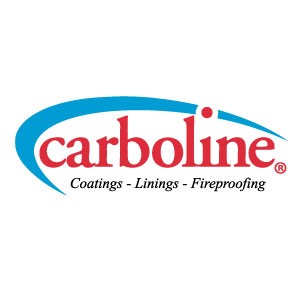
What is the first thing any painter does when having application issues? Nine times out of 10, that painter reaches for thinner, adding it to the coating with the care of a 16-year-old filling his or her gas tank for the first time. Thinner is the first trick every applicator tries when it comes to poor application properties, as most problems arise from very viscous, or thick, industrial coatings. Thinner will reduce the viscosity of the coating, making it significantly easier to spray.
This blog post explores the concept of fluid viscosity and the role it plays in the application of high-performance industrial coatings. It covers how an applicator can manipulate viscosity to achieve better application properties, as well as the importance of the relationship between pump fluid capacity and viscosity.
What is Viscosity?
Oversimplified, viscosity relates to the thickness of a fluid. The viscosity of a liquid will change with the temperature of that liquid. This concept is fundamental when it comes to the application of industrial coatings. To illustrate this point, consider a freshly made milkshake. Now, think about how much easier it is to drink that milkshake after it melts for a minute. But why? At no other point in its life will it be as cold or as thick as it is at the moment of inception. This phenomenon is no coincidence—fluid mechanics teaches us that temperature and viscosity are closely related. The colder a liquid gets, the more viscous it gets. As the milkshake begins to warm up or melt, its thickness begins to lower, becoming fluid and easier to pull through the straw.
The Impact of Viscosity on Coatings
So, what does this analogy have to do with coatings? Like the milkshake, coatings are fluids and subject to the same scientific laws. As you heat coatings, their viscosity naturally lowers. Conversely, when coatings are cold, they are thick or highly viscous. This notion explains why material stored overnight at a job site during cold weather months can be harder to apply first thing in the morning, until the products warm back up. The applicator may have trouble moving the paint through their equipment, even to the point of starving the tip—leaving an incomplete, or even worse, no fan pattern.
On the other hand, hotter material can provide some application benefits. Lower spray pressures, better atomizing attributes and a superior final appearance are all examples of the benefits of applying coatings at lower viscosities. All of these reasons and more are why thinner is typically used with coatings. Because of these temperature effects on viscosity, thinner recommendations are provided in ranges. For instance, an applicator in the Texas summer might not need as much thinner as someone in Canada using the same coating at the same time.
Using Heat to Lower Coating Viscosity
When thinning is not appropriate, it is common for applicators to apply heat to reduce the viscosity of the material. If cold material is being applied with resulting issues, heat may just be the solution to your problem. Remember—heat can be your friend by increasing the workability of a coating, but it can also shorten the pot life significantly. The practice of using heat in this manner can be a handy tool in your box but, like all tools, one must know how to use it.
If heat is used to lower the viscosity of the material, there are several factors to keep in mind. First, viscosity is not the only coating attribute affected by the introduction of heat. Pot life can be drastically impacted as well. For this reason, heat should not be used to lower the viscosity of material that has a short pot life in a single-leg application. Conversely, almost all plural-component spraying procedures include the use of heat to improve the viscosity of the coatings. This viscosity improvement makes the product sprayable, with an aesthetically appealing finish.
Applying Industrial Coatings with Short Pot Life
When purchasing a spray pump for high-performance coatings with a short pot life, it is essential to consider all performance specifications of the equipment. One of the most common mistakes is paying attention only to the power output of a pump, while completely neglecting other factors. Though the output pressure, or power, of a spray pump is an essential factor, it is not the only factor to consider when purchasing equipment for industrial coatings.
Equally important is the fluid capacity of the pump. Capacity, or output, is the amount of material a pump can expend at a time. Measured in gallons per minute (GPM), this factor usually exists independently of output pressure ratings. It is common for a pump to have the pressure required to atomize industrial coatings, but not have the necessary fluid capacity. Take commercial electric spray pumps as an example. These pumps provide plenty of pressure, with capacity severely lacking. The phenomenon that explains this entirely is viscosity.
Let’s go back to the milkshake for a minute. The thickness of the shake is only one factor slowing the ride to satisfaction—viscosity also deals with the internal friction within a liquid. Putting a liquid into a closed channel, like a straw, further complicates our analogy. The flow of the milkshake is virtually non-existent at the point of contact with the inner walls of the straw. The majority of movement comes from the internal cross-section of the milkshake—a space that is scarce with a typical size straw.
This factor is why fluid capacity is one of the most critical factors when choosing a spray pump. As the viscosity of a coating increases, the capacity requirements for equipment increase parallelly. The relation of the fluid with the fluid wall is the reason why pump capacity is debatably more critical than the pressure rating of the equipment. Typically, equipment pressure ratings will increase as the pump capacity increases, eliminating the concern of not having enough system pressure. In other words, the pump capacity is the size of the pump’s “straw.”
Because the viscosity of coatings has such a significant impact on their application, knowing how to manipulate it while improving its application properties can go a long way in ensuring a successful project outcome despite any challenging situations that may pop up.

